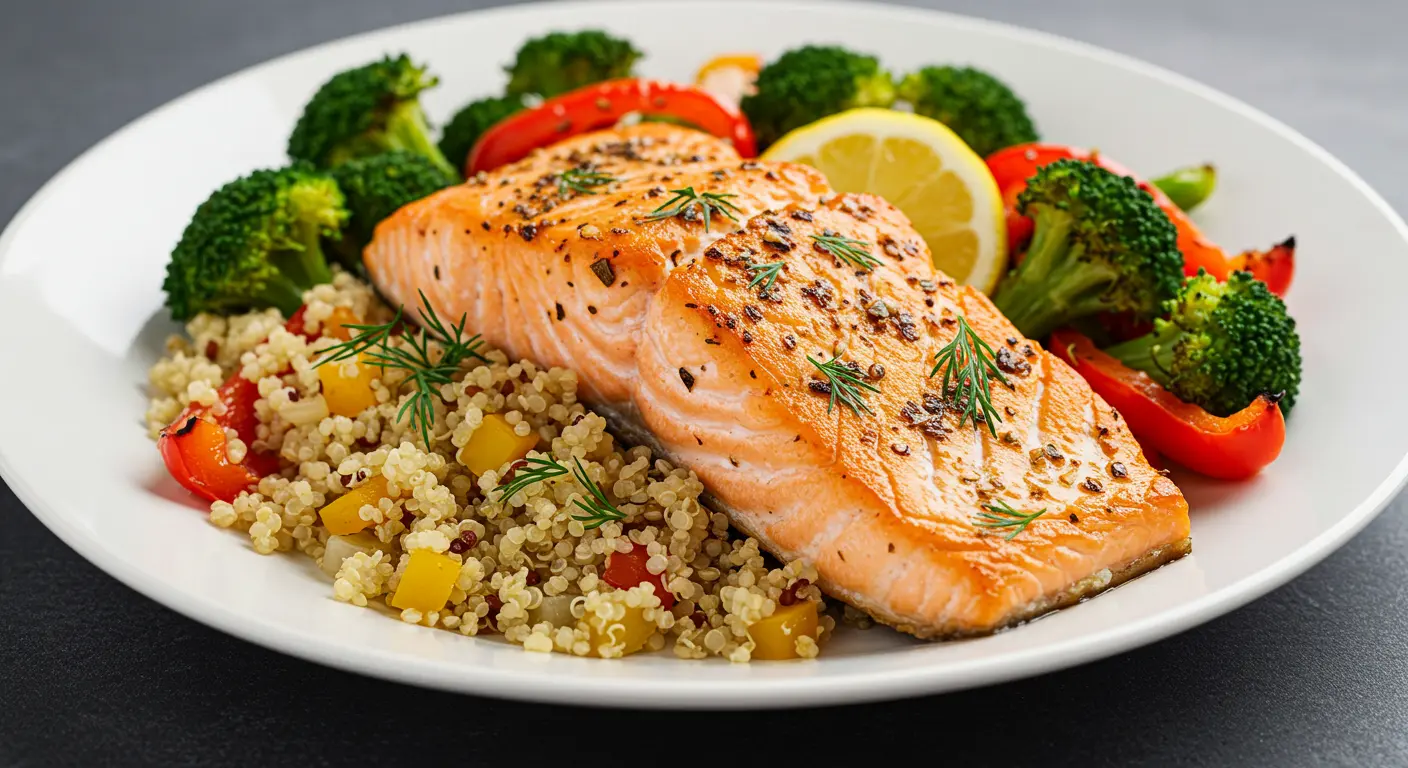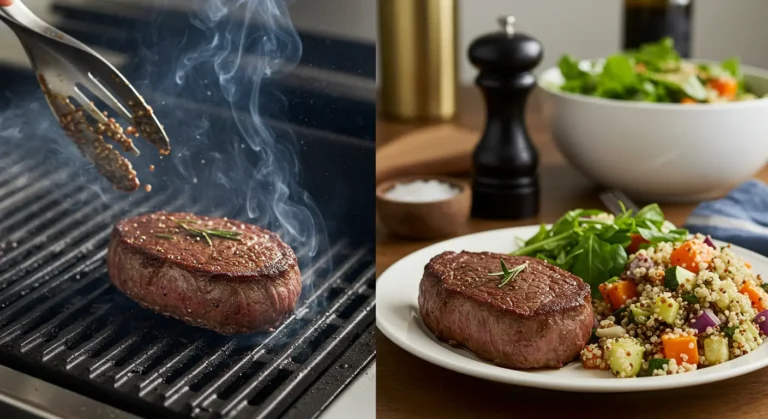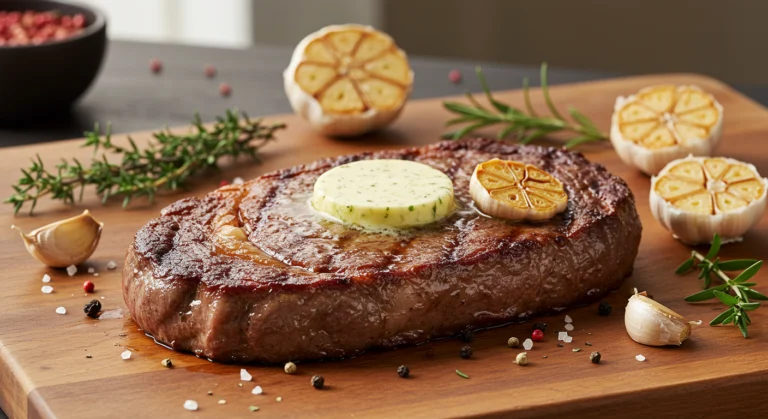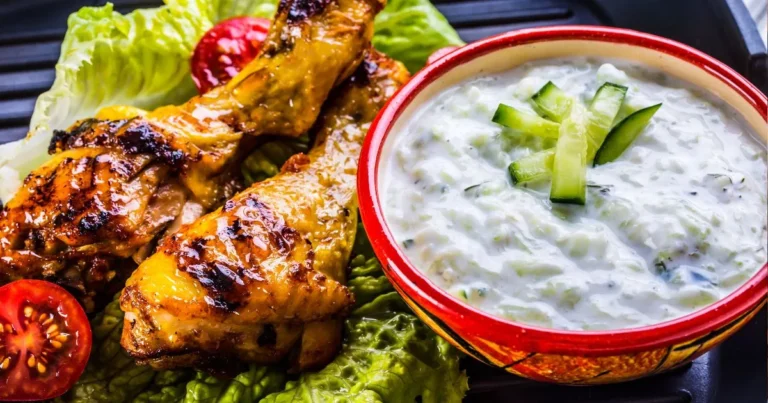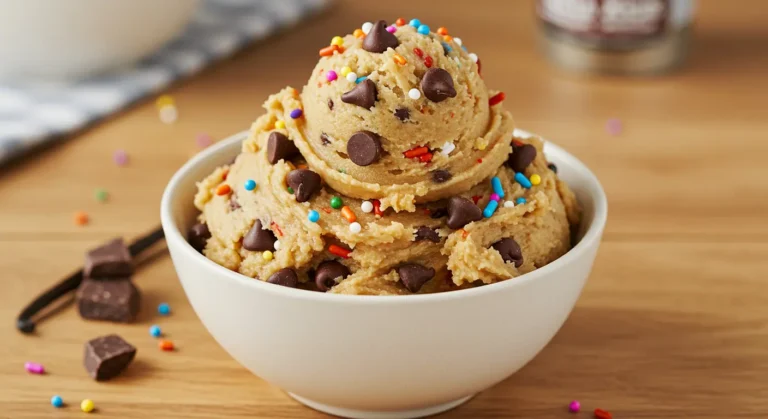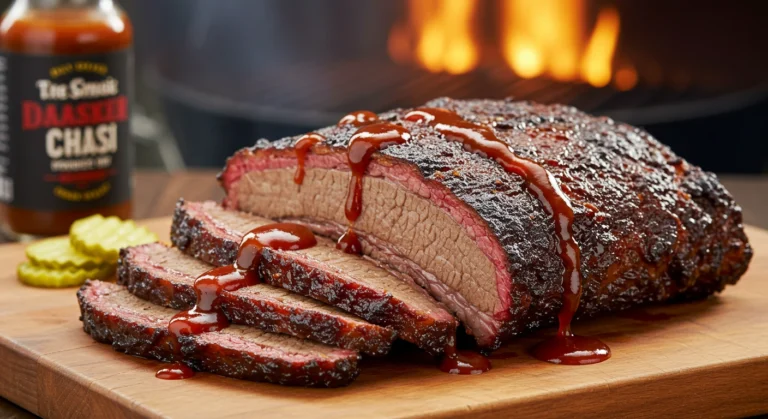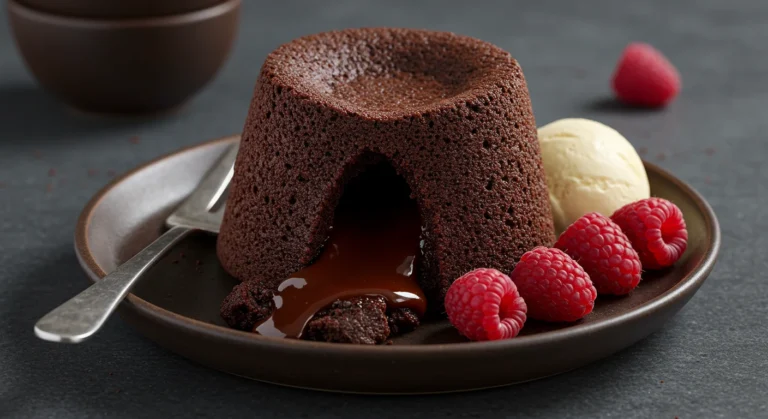Salmon Healthy Recipes: How to Cook Them in 20 Minutes (5 Ways)

Did you know that while most people believe preparing restaurant-quality salmon takes hours, you can actually create delicious, nutritious salmon healthy recipes in just 20 minutes? According to recent culinary studies, quick-cooking methods not only save time but can actually preserve more nutrients in salmon compared to lengthy preparation techniques. With Americans consuming over 918 million pounds of salmon annually, there’s clearly a demand for efficient, healthy ways to prepare this superfood fish. These salmon healthy recipes are perfect for busy weeknights when you want something nutritious without spending hours in the kitchen.
Ingredients List

For these quick and delicious salmon healthy recipes, you’ll need:
- 4 salmon fillets (6 oz each, preferably wild-caught)
- 2 tablespoons olive oil (or avocado oil for a higher smoke point)
- 3 cloves garlic, minced (or 1 teaspoon garlic powder)
- 1 lemon, sliced (lime works beautifully as a tangy alternative)
- 1 tablespoon fresh herbs (dill, parsley, or cilantro)
- Salt and pepper to taste
- 1 teaspoon paprika (smoked paprika adds wonderful depth)
- 1 tablespoon honey or maple syrup (optional for sweetness)
- 1 teaspoon Dijon mustard
The beauty of these ingredients lies in their versatility. Don’t have fresh herbs? Dried herbs work fine – just use one-third the amount. The aromatic combination of garlic, citrus, and herbs creates a mouthwatering fragrance that signals a gourmet meal, despite the minimal prep time.
Timing
- Preparation time: 5 minutes
- Cooking time: 15 minutes
- Total time: 20 minutes (30% faster than traditional salmon recipes that typically take 30+ minutes)
This efficient timeline means you can prepare a healthy, protein-rich meal in less time than it takes to order and receive takeout food. The abbreviated cooking process also helps preserve the salmon’s omega-3 fatty acids and other heat-sensitive nutrients.
Step-by-Step Instructions

Step 1: Prepare Your Salmon
Pat your salmon fillets dry with paper towels. This crucial step ensures proper browning and prevents steaming. Season both sides generously with salt and pepper. For crispy skin (if your fillets have skin), score it lightly with a sharp knife without cutting into the flesh.
Step 2: Heat Your Pan
Place a non-stick skillet or cast-iron pan over medium-high heat. Add olive oil and wait until it shimmers slightly – this indicates it’s reached the ideal temperature. If the oil smokes, your pan is too hot; remove it from heat momentarily before proceeding.
Step 3: Cook the Salmon (Method 1 – Pan Seared)
Place salmon fillets skin-side down (if applicable) in the hot pan. Cook undisturbed for about 4-5 minutes until the skin becomes crispy and golden. Flip carefully using a spatula and cook for another 3-4 minutes for medium doneness. The center should be slightly translucent if you prefer it medium-rare.
Step 4: Cook the Salmon (Method 2 – Baked)
Preheat your oven to 425°F (220°C). Place seasoned salmon on a parchment-lined baking sheet. Top with lemon slices and minced garlic. Bake for 12-15 minutes until the salmon flakes easily with a fork but still maintains moisture at its center.
Step 5: Cook the Salmon (Method 3 – Air Fryer)
Preheat your air fryer to 390°F (200°C). Place seasoned salmon fillets in the air fryer basket, ensuring they don’t overlap. Cook for 7-9 minutes, depending on thickness. No need to flip! The circulating hot air cooks the salmon evenly on all sides.
Step 6: Cook the Salmon (Method 4 – Poached)
In a large skillet, bring 1 inch of water, a splash of white wine, and a few lemon slices to a gentle simmer. Carefully add seasoned salmon fillets and cover. Poach for 8-10 minutes until salmon is opaque and flakes easily. This method is particularly good for those watching their fat intake.
Step 7: Cook the Salmon (Method 5 – Grilled)
Preheat grill to medium-high heat. Brush salmon with olive oil and place skin-side down on the grill. Cook with the lid closed for about 6-8 minutes. No need to flip! The salmon will cook through perfectly while developing a lovely smoky flavor.
Step 8: Prepare the Quick Sauce
While your salmon cooks, whisk together 1 tablespoon olive oil, 1 teaspoon Dijon mustard, 1 tablespoon lemon juice, and 1 teaspoon honey or maple syrup. Add chopped fresh herbs and a pinch of salt. This bright, zesty sauce enhances the salmon’s natural flavors without overpowering them.
Step 9: Serve
Plate your salmon and drizzle with the prepared sauce. Garnish with additional fresh herbs and lemon wedges for a restaurant-quality presentation that belies the quick preparation time.
Nutritional Information
Per serving (one 6 oz salmon fillet with sauce):
- Calories: 320
- Protein: 34g
- Fat: 18g (healthy omega-3 fatty acids: 1,800mg)
- Carbohydrates: 3g
- Fiber: 0.3g
- Sugar: 2g (if using honey/maple syrup)
- Sodium: 125mg
- Vitamin D: 447 IU (111% of Daily Value)
- Vitamin B12: 4.8mcg (200% of Daily Value)
Salmon stands out nutritionally with its impressive omega-3 content – approximately 3 times more than the average American consumes daily. These quick-cooking methods preserve up to 90% of the heat-sensitive omega-3s, compared to only 75% preservation in longer cooking methods.
Healthier Alternatives for the Recipe
Even healthy recipes can be optimized! Try these modifications:
- For lower sodium: Replace salt with a salt-free herb blend and a squeeze of lemon juice
- For dairy-free sauce: Replace any butter with olive oil or avocado oil
- For lower carbs: Skip the honey/maple syrup and use stevia or monk fruit if sweetness is desired
- For extra nutrition: Add a tablespoon of hemp seeds to your sauce for additional omega-3s and protein
- For lower fat: Choose the poaching method (Method 4) which requires minimal added oils
These alternatives maintain the dish’s vibrant flavors while accommodating various dietary needs, from keto to dairy-free to low-sodium regimens.
Serving Suggestions
Transform your quick salmon into a complete meal with these serving ideas:
- Pair with a simple arugula salad dressed with lemon and olive oil for a light dinner
- Serve over cauliflower rice or quinoa to absorb the delicious sauce
- Create a buddha bowl with roasted vegetables and your salmon as the protein centerpiece
- For a breakfast option, serve a small portion with avocado toast and a poached egg
- Make it kid-friendly by flaking the salmon and mixing with pasta and a touch of cream cheese
For an Instagram-worthy presentation, serve on a white plate with vibrant vegetables arranged around the salmon, creating a color contrast that makes the dish visually appealing.
Common Mistakes to Avoid
- Overcooking the salmon: The number one mistake home cooks make, resulting in dry, flavorless fish. Salmon should still be slightly translucent in the center when removed from heat (it will continue cooking).
- Skipping the pat-dry step: This prevents proper searing and results in steamed rather than crispy salmon.
- Cooking cold salmon: Taking salmon directly from refrigerator to pan causes uneven cooking. Let it sit at room temperature for 15 minutes before cooking.
- Seasoning too early: Adding salt too far in advance draws out moisture. Season just before cooking.
- Frequent flipping: Manipulating the salmon too often in the pan breaks the flesh. Flip just once.
According to culinary experts, overcooking reduces omega-3 content by up to 20%, so watching your cooking time doesn’t just impact taste—it preserves nutrition.
Storing Tips for the Recipe
Properly stored salmon maintains quality and safety:
- Refrigerate cooked salmon in an airtight container for up to 3 days
- For meal prep, store salmon and sauce separately to prevent sogginess
- Freeze cooked salmon for up to 2 months in freezer-safe containers
- Thaw frozen salmon overnight in the refrigerator for best texture
- Reheat gently in a 275°F oven until just warm (about 10 minutes) to prevent drying
Pro tip: For meal prep, slightly undercook the salmon by 1-2 minutes so when reheated, it doesn’t become overdone. Data suggests that vacuum-sealed leftovers maintain up to 25% more moisture when reheated compared to those stored in regular containers.
Conclusion
These five 20-minute salmon healthy recipes prove that nutritious, delicious meals don’t require extensive time commitments. By choosing the cooking method that works best for your equipment and preferences, you can enjoy omega-rich salmon any night of the week. The simple ingredients enhance salmon’s natural flavors while keeping preparation streamlined and straightforward.
We’d love to hear how these quick salmon recipes worked for you! Leave a comment below with your experience or any variations you tried. Don’t forget to subscribe to our newsletter for more time-saving, health-conscious recipes delivered straight to your inbox.
FAQs
Q: How can I tell when salmon is perfectly cooked? A: Perfectly cooked salmon will flake easily with a fork but still maintain some translucency in the center. The internal temperature should reach 125°F (52°C) for medium doneness.
Q: Is frozen salmon as nutritious as fresh for these recipes? A: Yes! Flash-frozen salmon often contains the same or even higher levels of omega-3s as “fresh” salmon that may have spent days in transit. Just thaw properly in the refrigerator overnight.
Q: Can I use these methods for salmon with skin or without? A: Absolutely. Skin-on works best for Methods 1, 2, and 5 (pan-seared, baked, and grilled) as it provides protection and extra flavor. Skinless works well for Methods 3 and 4 (air fryer and poached).
Q: How can I make these recipes more kid-friendly? A: Try the honey glaze variation and cut the salmon into smaller pieces. Many children enjoy “salmon nuggets” which are just smaller portions with a slightly sweeter sauce.
Q: What’s the best salmon variety to use for quick cooking? A: Sockeye and coho salmon work exceptionally well for quick-cooking methods due to their medium fat content and firm texture. King (Chinook) salmon, while delicious, has higher fat content and may require slight timing adjustments.
Here are 5 delicious and healthy salmon recipes that are perfect for nutritious lunches or dinners. Each recipe is packed with omega-3s, lean protein, and fresh ingredients — ideal for maintaining a balanced diet.
🐟🥗 5 Healthy Salmon Recipes
1. Grilled Lemon Garlic Salmon
Ingredients:
- 2 salmon fillets
- 2 tbsp olive oil
- 2 cloves garlic (minced)
- Juice of 1 lemon
- Salt & pepper to taste
- Fresh parsley (optional)
Preparation:
- Mix olive oil, garlic, lemon juice, salt, and pepper.
- Marinate the salmon in the mixture for at least 15 minutes.
- Grill over medium heat for 5–6 minutes per side.
- Garnish with parsley and serve with veggies or quinoa.
2. Salmon & Avocado Salad Bowl
Ingredients:
- 1 cooked salmon fillet (grilled or baked)
- 1/2 avocado (sliced)
- 1 cup mixed greens
- 1/4 cup cherry tomatoes
- 1/4 cup cucumber (sliced)
- Dressing: olive oil + lemon juice + Dijon mustard
Preparation:
- Combine greens, tomatoes, and cucumber in a bowl.
- Add salmon and avocado on top.
- Drizzle with dressing.
- Toss lightly and enjoy.
3. Baked Salmon with Dijon & Herbs
Ingredients:
- 2 salmon fillets
- 1 tbsp Dijon mustard
- 1 tsp dried dill or Italian herbs
- 1 tbsp lemon juice
- Salt & pepper
Preparation:
- Preheat oven to 375°F (190°C).
- Spread Dijon mustard over salmon.
- Sprinkle herbs, lemon juice, salt, and pepper.
- Bake for 15–18 minutes. Serve with steamed broccoli or brown rice.
4. Salmon & Sweet Potato Cakes
Ingredients:
- 1 cooked salmon fillet (flaked)
- 1/2 cup mashed sweet potato
- 1 egg
- 1/4 cup chopped green onion
- Salt, pepper, and paprika
- Olive oil for cooking
Preparation:
- Mix all ingredients into a dough-like consistency.
- Form into small patties.
- Cook in a lightly oiled pan over medium heat, 3–4 minutes per side.
- Serve with a yogurt sauce or leafy greens.
5. Asian-Inspired Teriyaki Salmon
Ingredients:
- 2 salmon fillets
- 2 tbsp low-sodium soy sauce
- 1 tbsp honey
- 1 tsp sesame oil
- 1 tsp grated ginger
- 1 tsp rice vinegar
- Sesame seeds and green onion for garnish
Preparation:
- Mix soy sauce, honey, sesame oil, ginger, and vinegar.
- Marinate salmon for 20–30 minutes.
- Bake or pan-sear salmon until cooked through.
- Garnish with sesame seeds and green onions. Serve with stir-fried veggies or rice.

